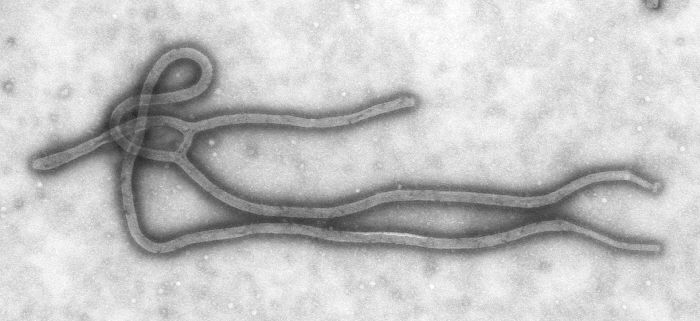A sequencing machine that decodes DNA has been installed in a tent in Sierra Leone, by UK scientists.
The machine, designed normally to operate in a clean, air-conditioned lab,  is helping scientists, doctors and politicians to track the on-going spread of Ebola virus, and identify the routes of viral spread in West Africa.
is helping scientists, doctors and politicians to track the on-going spread of Ebola virus, and identify the routes of viral spread in West Africa.
The first sequences flowed off the machine, the deployment of which has been funded by the Wellcome Trust, this week. Already the data is proving informative.
"We can now begin to test how the virus really spreads," explains Cambridge University's virology professor, Ian Goodfellow.
"Previously we had just the epidemiology to go on. Now we can follow the genetic sequences to see who is giving the virus to whom."
The data is even highlighting how the strains that are causing outbreaks are getting into the country.
"We could show that viruses linked to outbreaks are clearly coming over the border from neighbouring Guinea," says Goodfellow. "The government in Sierra Leone have been very supportive and have already taken stems to address the issue."
It's not all plain sailing though. "We installed this machine because getting the samples out of the country to analyse was a major problem", Goodfellow explains. "Commercial airlines won't carry Ebola."
The genomic information generated by the machine on the ground amounts to about 8GB of data, "and we're having to use a 3G dongle to upload that to our servers here, because there's no decent Internet connection. It's taking days!"
All the same, the motivation of the team is to make their data, which is being gathered and generated in real time as the outbreak continues, freely available to researchers across the world so that everyone can work on the information it contains, together.
This certainly isn't the first time that people have attempted to operate a high-end DNA sequencing machine in an outbreak situation like this, Goodfellow acknowledges, but it is probably the first time that the operation has been set up in a tent, in the middle of an Ebola outbreak, by a virology professor.
"Normally, in a lab, you'd get an engineer to do this for you. We had to do it ourselves, but it is working!"
- Previous Can Chimpanzees Cook?
- Next Key to cell reprogramming uncovered










Comments
Add a comment